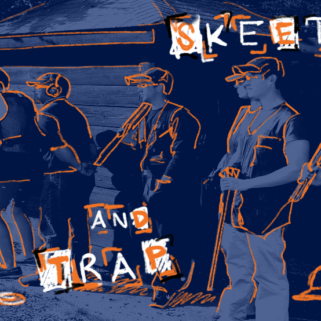I knew something was wrong with the way the kids in my carpool looked at the turbaned man behind the counter of the gas station in Atlanta, Ga., my hometown. I also knew he was Sikh and Punjabi—from India, like my parents—by the long, uncut beard and the turban he wore and the lively bhangra dance music playing behind the counter.
He was Sikh, like Balbir Singh Sodhi, who owned a gas station in Mesa, Ariz., and who was shot to death on Sept. 15, 2001. Like Surinder Singh and Gurmej Atwal, two elderly men shot and killed on their evening stroll in Elk Grove, Calif. in March 2011.
I remember smiling at the man behind the counter of the gas station that afternoon in the middle of September 2001. It was a secret smile I shared sometimes with strangers, like the substitute teacher whose shiny black hair and British accent caught the attention of the whole middle school. The smile whispered of wrinkled sari-clad grandmothers and samosas for lunch on Saturday afternoons after long drives to temple.
My carpool companions looked at him flatly. They stared at his turban. I heard one of them say the date that had been hanging in our minds for a few days, since the morning when a nurse at the orthodontist’s office stopped time for a moment—her hands still groping around my gums—at 8:51 a.m. to tell me what had just happened.
I accepted the extra piece of chocolate he slid me. I imagined a young cousin or grown-up daughter whose smile he remembered in mine. My classmates bought their gum and smacked it in the green S.U.V. as we headed back to our brick and stucco street and traded 10-year-old knowledge of our time.
“An Arab,” said one. “Like the plane crashers. They wear those turbans.”
I thought of correcting him. But then he turned to me and whispered, like he was promising he wouldn’t tell anyone if I said yes—“Isn’t that where your parents lived? Over there?”
My parents had lived “over there”—someplace, anyway, though not exactly where this boy thought they lived. My family is Hindu, and the man at the gas station was Sikh. My parents came to America in 1987. I have been leaving America ever since: sometimes to visit family in India, and sometimes to other places.
Nearly ten years later, in the summer of 2011, I found myself again paused in transit, this time at an airport in Frankfurt. I felt a familiar stare from the woman sitting to my left.
The blonde woman was an American, with a German husband. Her light eyes were roving, taking in the scarf I’d pulled around my hair to help it survive thirty hours in transit. They saw the New Balance sneakers, the iPod headphones, the small notebook in my hand, filled with looping, foreign script—a weak attempt at practicing writing in Hindi.
A dark woman sat on my other side. Her sari was pulled tight around her shoulders and she wore a dark silk scarf pulled neatly into a hijab over her hair.
Both women’s eyes missed the blue passport in my lap.
The blonde one spoke in English to her husband: “They’re even trying to dress like us now.” A sniff. Her husband looked up, scanned me, and nodded. They both came from countries with too many immigrants. They both curved the corners of their mouth in disdain. Her boots were leather—Italian—and her scarf, I was sure, had a tag declaring it made in Bangladesh or Nepal. She wore the world. But I had the distinct feeling I didn’t belong in hers.
The dark one spoke in Urdu to her children: “Go ask the auntie if she wants a sweet.” Her hijabed teenage daughter and bare-headed little boy offered me a quiet salaam and handed me a strange lumpy orange object. I met her eyes and smiled. She nodded at the strange lost daughter that she saw, thinking me Muslim like her, thinking me alone.
The blonde one’s voice was loud, despite her attempt to whisper to her husband. “Ten years and I still hate flying when I see them.” She was looking at a man walking towards our bench. He was turbaned, like the Sikh uncle who slipped me an extra chocolate once ten years ago. He held his young son’s hand, adjusted his long white kurta shirt.
“He’s not an Arab,” said her husband.
“How would I know?” she whispered loudly.
She did not need to whisper.


